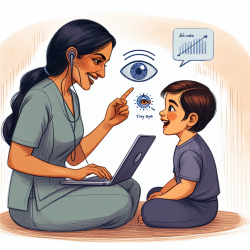Introduction
For children and adolescents with chronic pain, sleep disturbances are a common and often debilitating issue. The research article "Sleep among Youth with Severely Disabling Chronic Pain: Before, during, and after Inpatient Intensive Interdisciplinary Pain Treatment" explores how structured, interdisciplinary treatment can transform sleep patterns in these young individuals. This blog post will delve into the findings of this study and discuss how practitioners can apply these insights to improve therapeutic outcomes for children.
Understanding the Study
The study focused on youth with severely disabling chronic pain, assessing their sleep patterns before, during, and after participation in an intensive interdisciplinary pain treatment (IIPT) program. The research highlighted significant improvements in sleep timing and consistency among participants who underwent the IIPT, compared to a control group receiving standard outpatient care.
Key Findings
- Improved Sleep Timing: Participants in the IIPT program experienced earlier sleep onset and wake times, aligning more closely with healthy sleep schedules.
- Reduced Sleep Variability: The program significantly decreased night-to-night variability in sleep patterns, promoting more consistent sleep habits.
- Maintained Sleep Duration: Despite changes in timing and variability, participants maintained a healthy sleep duration of approximately 9 hours per night.
Applying Research to Practice
For practitioners, these findings underscore the importance of structured interventions in managing sleep disturbances in children with chronic pain. Here are some practical steps to consider:
- Implement Structured Routines: Encourage consistent bedtimes and wake times to stabilize sleep patterns. This structure can be integrated into daily therapy sessions and home routines.
- Promote Environmental Control: Create a sleep-conducive environment by minimizing light exposure at night and encouraging natural light during the day.
- Incorporate Feedback Mechanisms: Use tools like sleep diaries or actigraphy to provide feedback on sleep patterns, helping children and families understand and improve their sleep habits.
Encouraging Further Research
While the study provides valuable insights, it also highlights the need for further research to explore long-term maintenance of sleep improvements and their impact on pain management and quality of life. Practitioners are encouraged to engage in or support ongoing research efforts in this area.
To read the original research paper, please follow this link: Sleep among Youth with Severely Disabling Chronic Pain: Before, during, and after Inpatient Intensive Interdisciplinary Pain Treatment.










